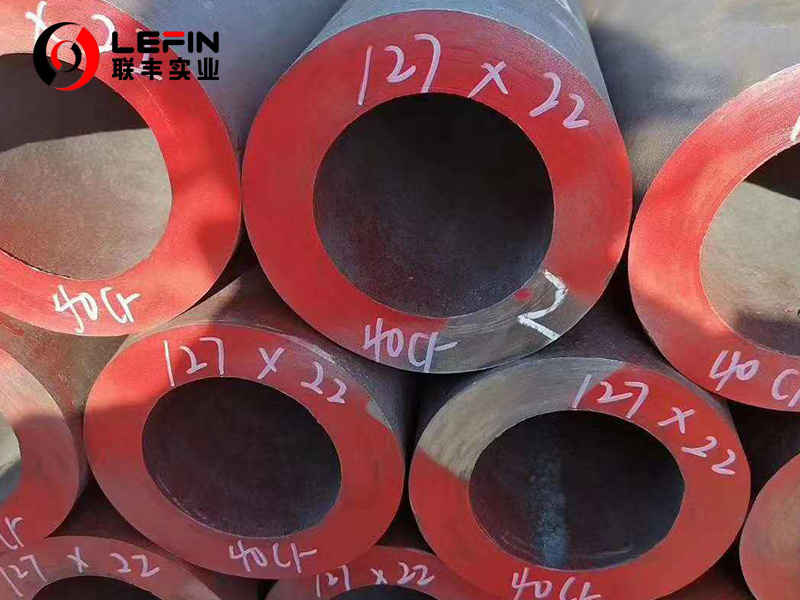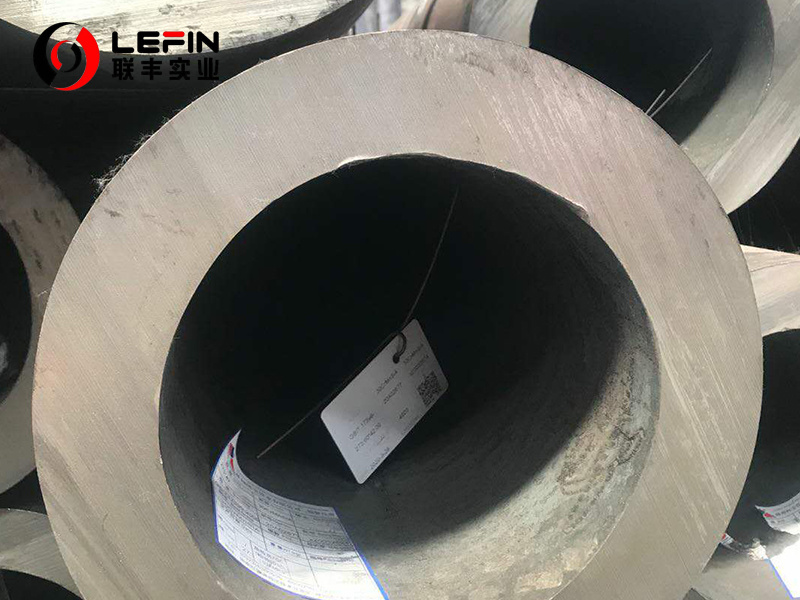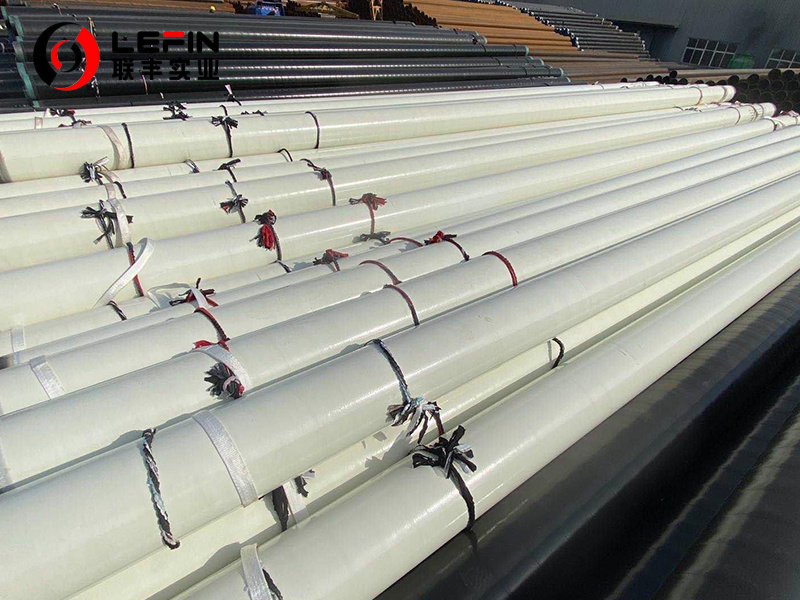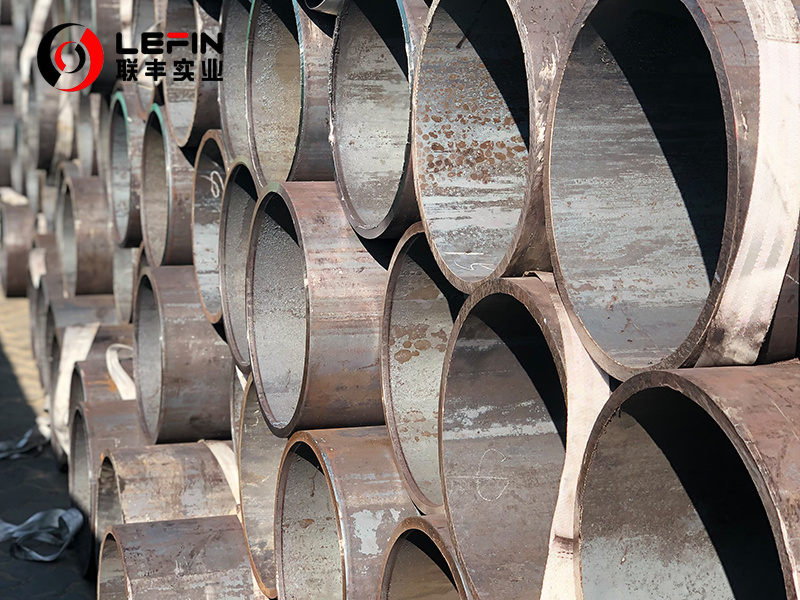



- Details
-
The standard Chinese translation of this term is "hot-expanded seamless steel pipe", which is a type of seamless steel pipe produced through a specific hot working process and is mainly used in high-pressure and high-strength industrial scenarios.
Analysis of Core Concepts
1.Process Principle :Using ordinary seamless steel pipes as raw materials, they are heated to a plastic state, and then their diameters are expanded to the target specifications through molds or mechanical force, ultimately forming seamless steel pipes with larger diameters.
2. The key to "seamless" :Unlike welded steel pipes, it has no welding seams on the entire pipe wall, thus performing better in terms of pressure resistance, corrosion resistance and structural stability.
Core advantages
1.Flexible specifications :Small-diameter seamless tubes can be expanded into large-diameter products, making up for the process limitations of directly rolling large-diameter seamless tubes.
2.High strength :The hot expansion process can optimize the internal metal structure of the steel pipe, making its mechanical properties (such as tensile strength and yield strength) meet the requirements of high-pressure working conditions.
3.Cost control :Compared with the direct production of large-diameter seamless pipes, the hot expansion process has a higher raw material utilization rate and can reduce some production costs.
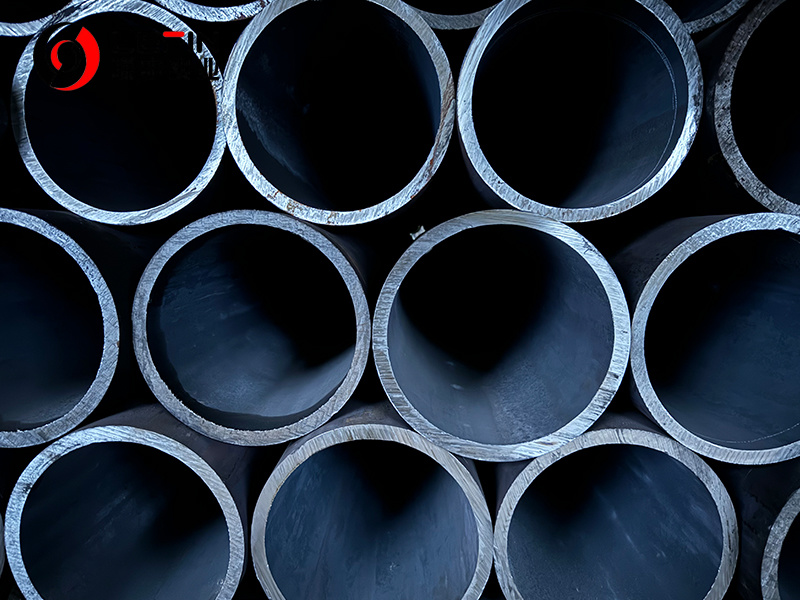
Main application scenarios
- Oil and gas industry:
Pipelines used for transporting high-pressure oil and gas.
- Power industry:
As boiler tubes and steam pipes for power stations.
- Mechanical manufacturing:
It is used for making pressure-bearing components such as high-pressure oil cylinders and hydraulic pipelines.
- Municipal engineering:
Some high-pressure water supply and gas transmission pipelines will also be adopted.
Technical parameters between hot-expanded seamless steel pipes and ordinary seamless steel pipes
Comparison dimension
Hot Expanded Seamless Steel Pipe (Hot Expanded Seamless Steel Pipe)
Ordinary seamless steel pipe (Standard Seamless Steel Pipe)
Production Process
Using ordinary seamless steel pipes as raw materials.After heating to a plastic state, they are formed through mechanical force expansion.
Using steel billets as raw materials, they are directly formed in one go through piercing and rolling (such as cold drawing and hot rolling).
Raw Material Foundation
It relies on ordinary seamless steel pipes (secondary processing products
It relies on steel billets (primary processing products).
Diameter Range
It has a wider coverage and can produce large-diameter products (common φ219-1220mm, some can be even larger).
The diameter is relatively small, with the mainstream specifications mostly ≤φ630mm. The production of large diameters is difficult
Mechanical Property
The thermal expansion process may cause slight fluctuations in local performance, which need to be optimized through subsequent heat treatment to ultimately meet the high-pressure standards
The metal structure is more uniform, and the stability of mechanical properties (tensile strength, yield strength) is stronger
Production Cost
Large-diameter products have lower costs (high raw material utilization rate, avoiding the rolling problems of large-diameter steel billets)
Small-diameter products have a more favorable cost, while large-diameter products have a higher cost due to their complex manufacturing process
Core AdvantageIt has strong specification flexibility and can quickly respond to the demand for large-diameter seamless pipes
It features stable performance and is suitable for scenarios with high requirements for precision and consistency
Typical Application
Large-diameter high-pressure oil and gas transmission pipes, large-scale power station steam pipes, and municipal high-pressure water transmission pipes
Small-diameter hydraulic tubes, precision mechanical parts, automotive tubes, and medium and small-diameter boiler tubes
HOT EXPANDED SEAMLESS STEEL PIPE
Subcategory
Keyword
- Details
-
The standard Chinese translation of this term is "hot-expanded seamless steel pipe", which is a type of seamless steel pipe produced through a specific hot working process and is mainly used in high-pressure and high-strength industrial scenarios.
Analysis of Core Concepts
1.Process Principle :Using ordinary seamless steel pipes as raw materials, they are heated to a plastic state, and then their diameters are expanded to the target specifications through molds or mechanical force, ultimately forming seamless steel pipes with larger diameters.
2. The key to "seamless" :Unlike welded steel pipes, it has no welding seams on the entire pipe wall, thus performing better in terms of pressure resistance, corrosion resistance and structural stability.
Core advantages
1.Flexible specifications :Small-diameter seamless tubes can be expanded into large-diameter products, making up for the process limitations of directly rolling large-diameter seamless tubes.
2.High strength :The hot expansion process can optimize the internal metal structure of the steel pipe, making its mechanical properties (such as tensile strength and yield strength) meet the requirements of high-pressure working conditions.
3.Cost control :Compared with the direct production of large-diameter seamless pipes, the hot expansion process has a higher raw material utilization rate and can reduce some production costs.

Main application scenarios
- Oil and gas industry:
Pipelines used for transporting high-pressure oil and gas.
- Power industry:
As boiler tubes and steam pipes for power stations.
- Mechanical manufacturing:
It is used for making pressure-bearing components such as high-pressure oil cylinders and hydraulic pipelines.
- Municipal engineering:
Some high-pressure water supply and gas transmission pipelines will also be adopted.
Technical parameters between hot-expanded seamless steel pipes and ordinary seamless steel pipes
Comparison dimension
Hot Expanded Seamless Steel Pipe (Hot Expanded Seamless Steel Pipe)
Ordinary seamless steel pipe (Standard Seamless Steel Pipe)
Production Process
Using ordinary seamless steel pipes as raw materials.After heating to a plastic state, they are formed through mechanical force expansion.
Using steel billets as raw materials, they are directly formed in one go through piercing and rolling (such as cold drawing and hot rolling).
Raw Material Foundation
It relies on ordinary seamless steel pipes (secondary processing products
It relies on steel billets (primary processing products).
Diameter Range
It has a wider coverage and can produce large-diameter products (common φ219-1220mm, some can be even larger).
The diameter is relatively small, with the mainstream specifications mostly ≤φ630mm. The production of large diameters is difficult
Mechanical Property
The thermal expansion process may cause slight fluctuations in local performance, which need to be optimized through subsequent heat treatment to ultimately meet the high-pressure standards
The metal structure is more uniform, and the stability of mechanical properties (tensile strength, yield strength) is stronger
Production Cost
Large-diameter products have lower costs (high raw material utilization rate, avoiding the rolling problems of large-diameter steel billets)
Small-diameter products have a more favorable cost, while large-diameter products have a higher cost due to their complex manufacturing process
Core AdvantageIt has strong specification flexibility and can quickly respond to the demand for large-diameter seamless pipes
It features stable performance and is suitable for scenarios with high requirements for precision and consistency
Typical Application
Large-diameter high-pressure oil and gas transmission pipes, large-scale power station steam pipes, and municipal high-pressure water transmission pipes
Small-diameter hydraulic tubes, precision mechanical parts, automotive tubes, and medium and small-diameter boiler tubes
Related products
Product Consulting

Address: Hengtai Road,Daqiuzhuang Town,Jinghai County,Tianjin,China
Mob: +8615122229899(whatspp)
Phone: +86 22 58171905
Fax: +86 22 58171902
E-mail:info@lefinsteel.com
Get company updates

Tianjin Lefin Industrial Co.,Ltd. All rights reserved City sub-station SEO www.300.cn


